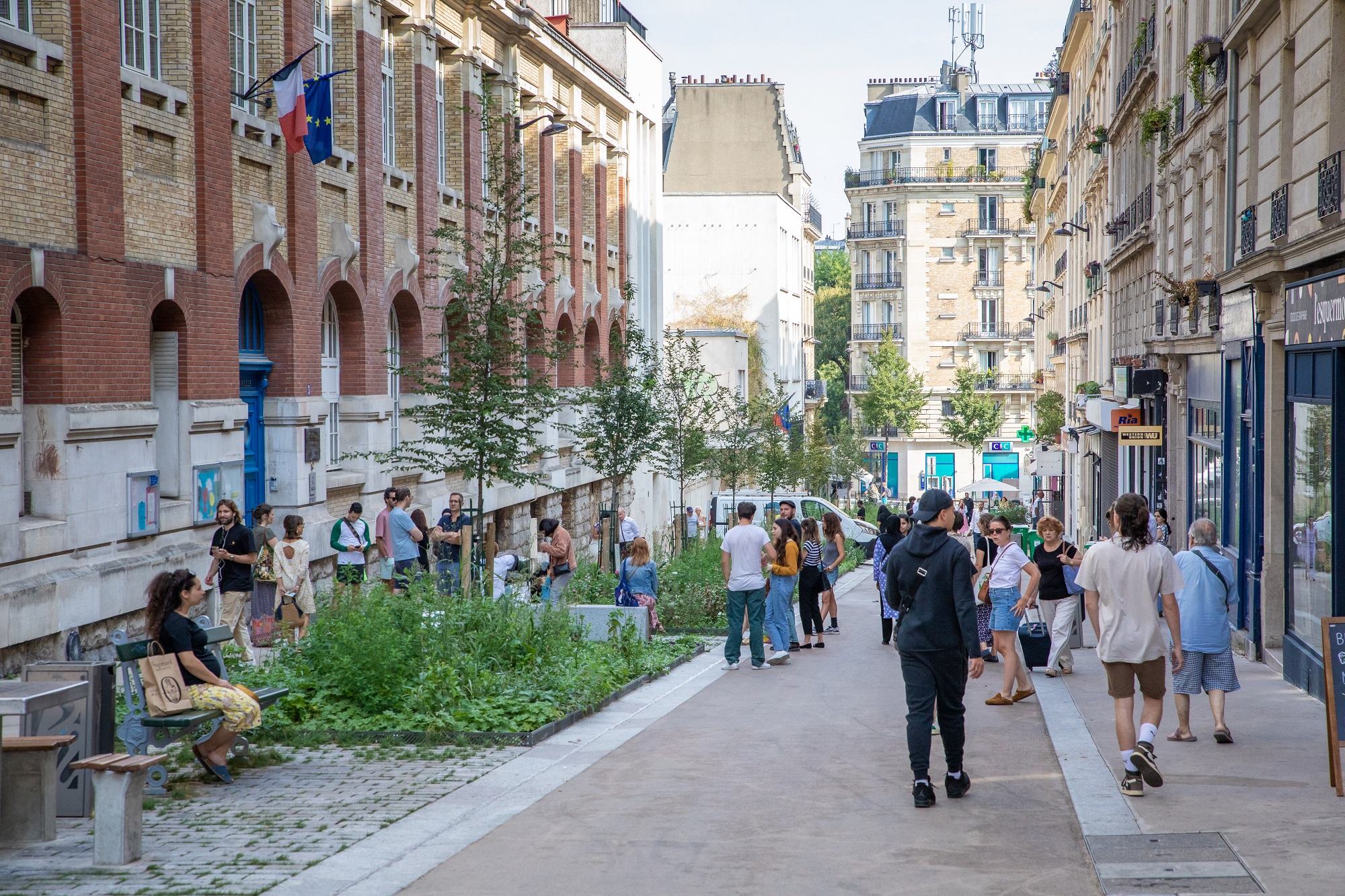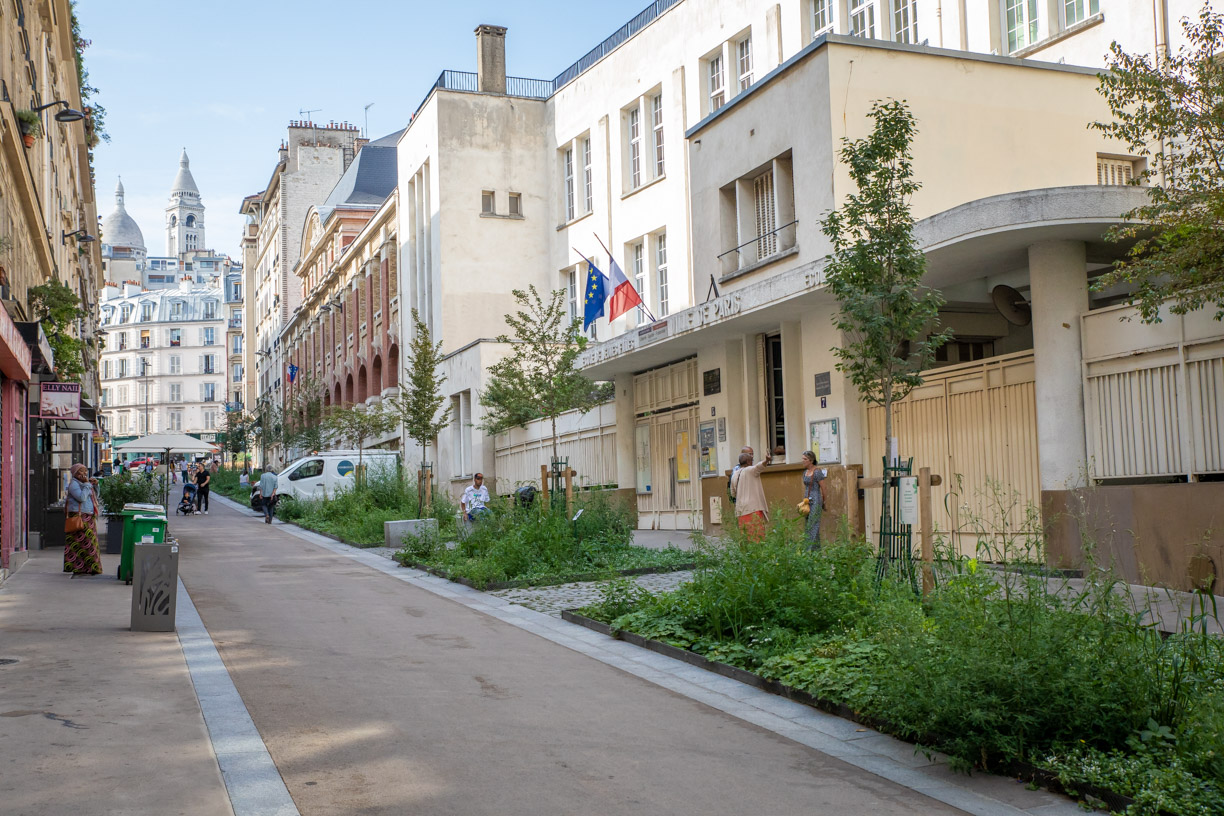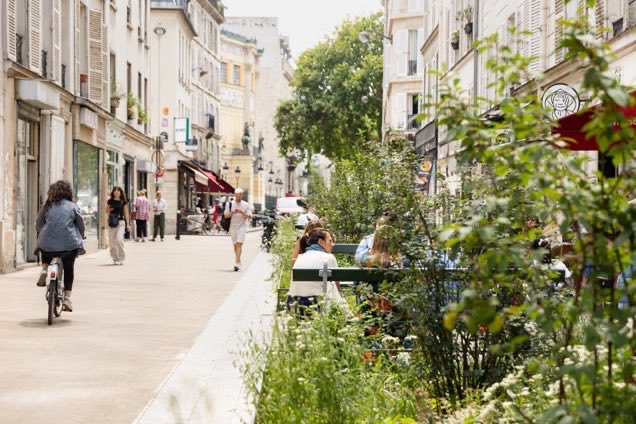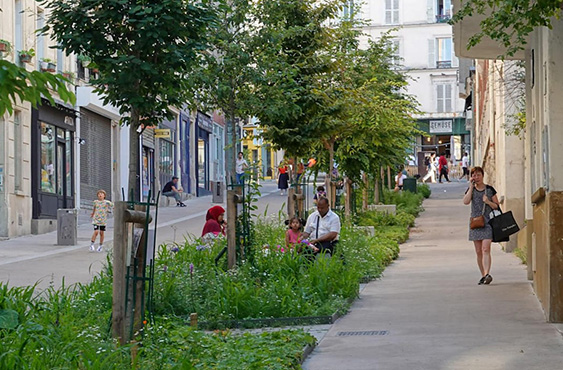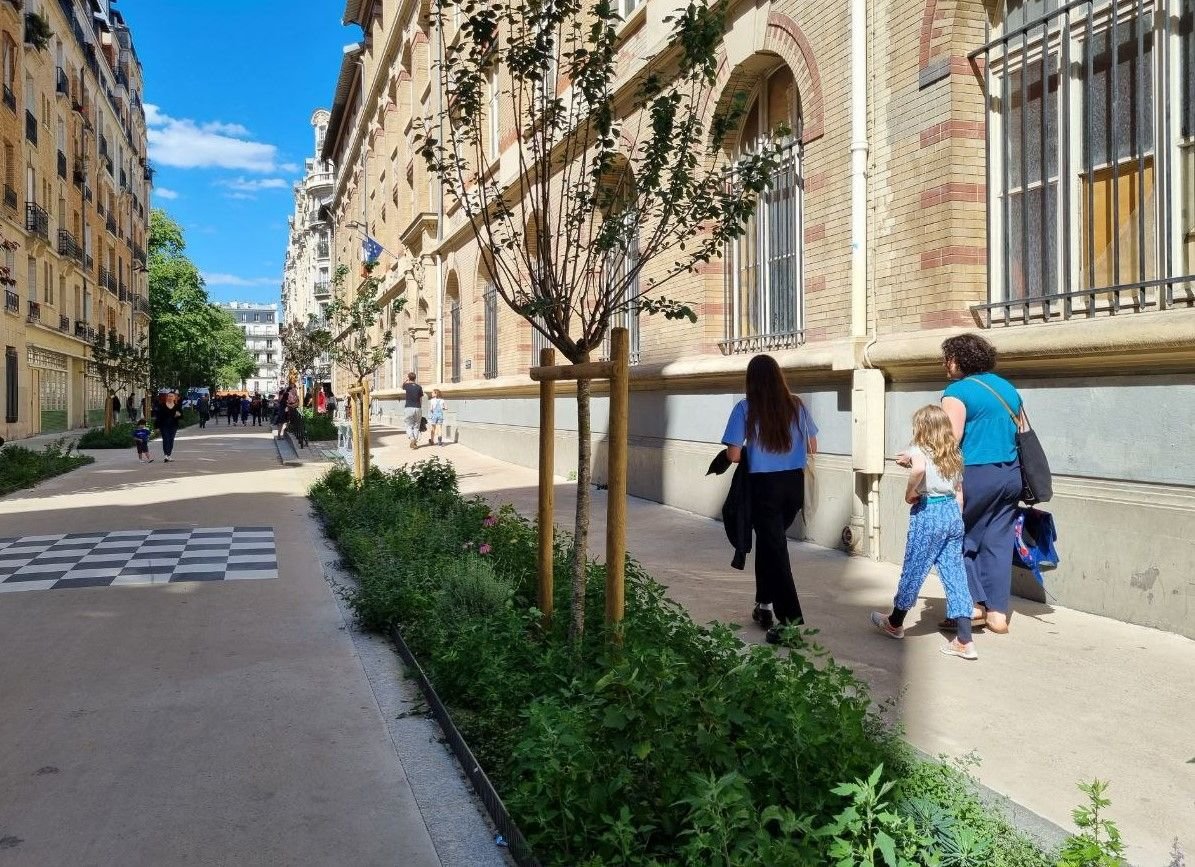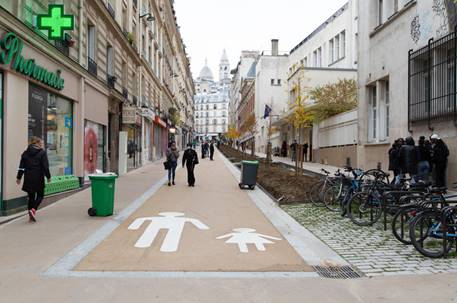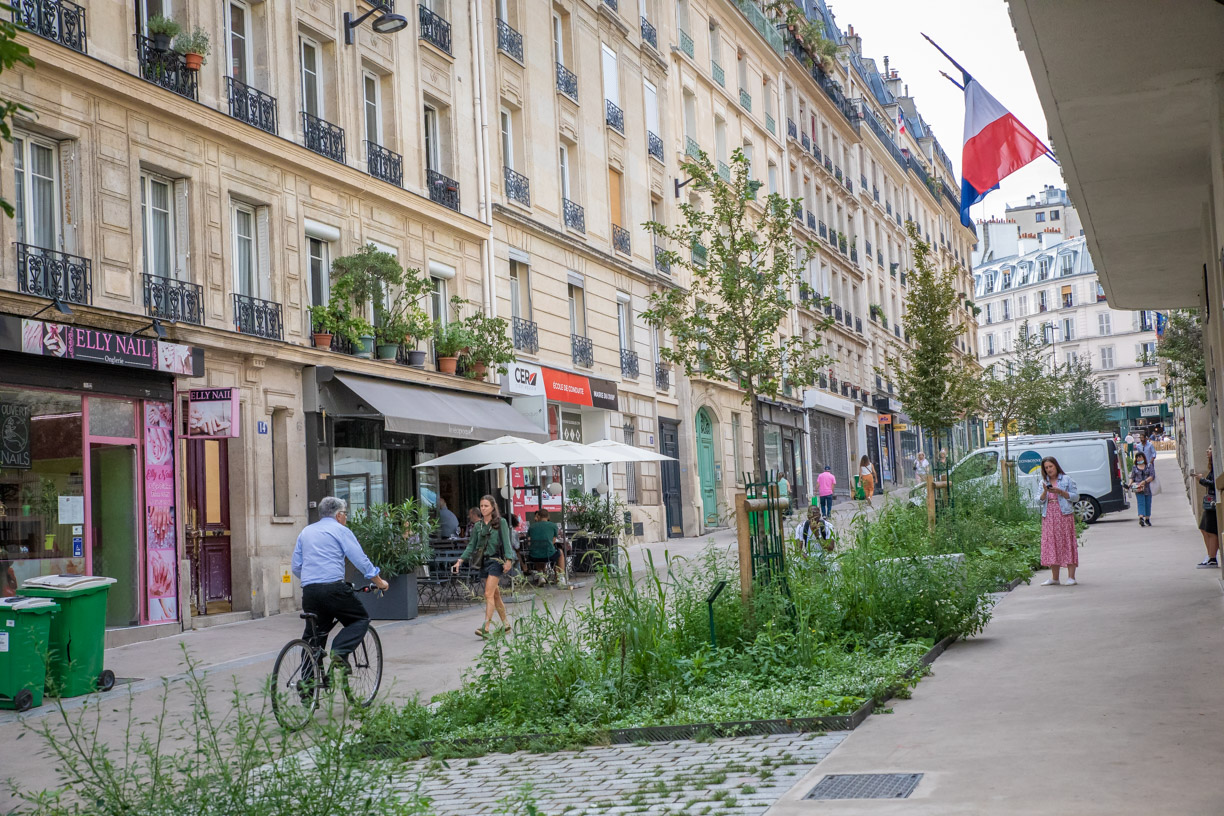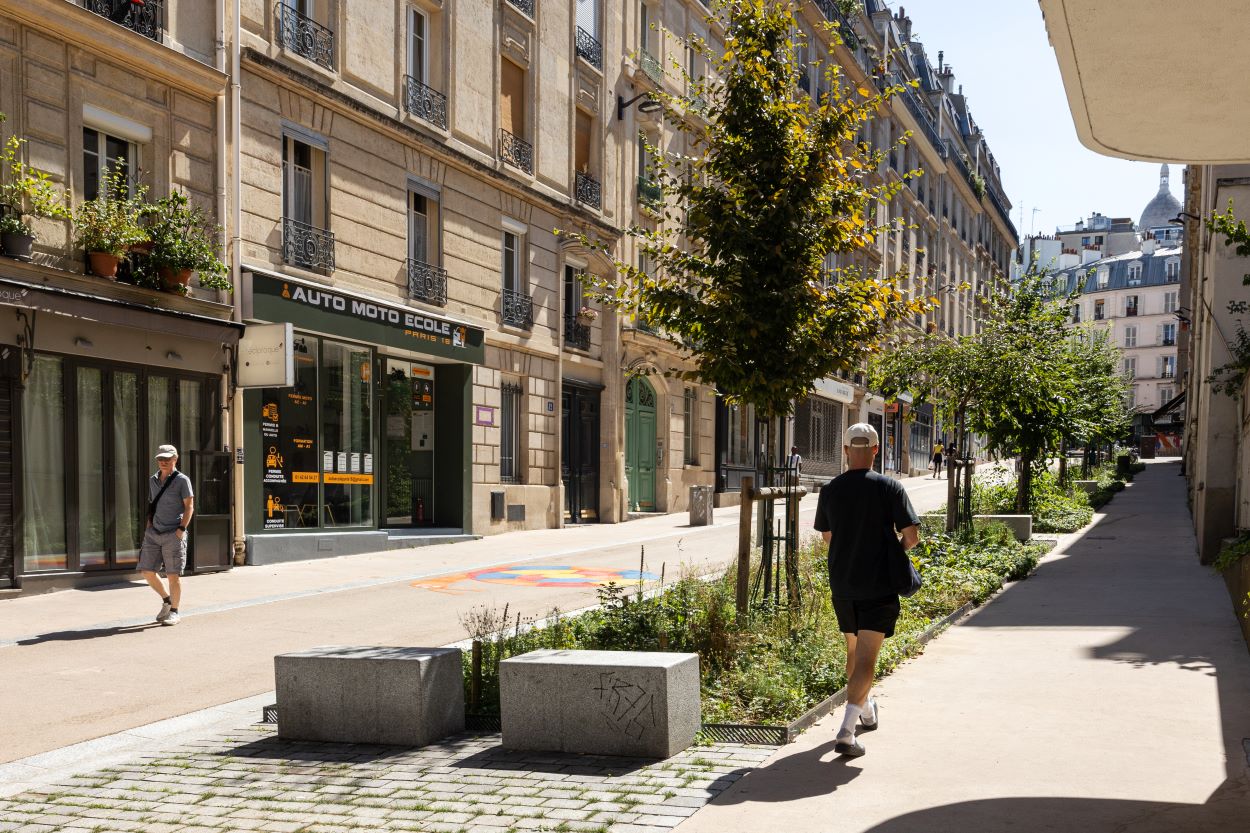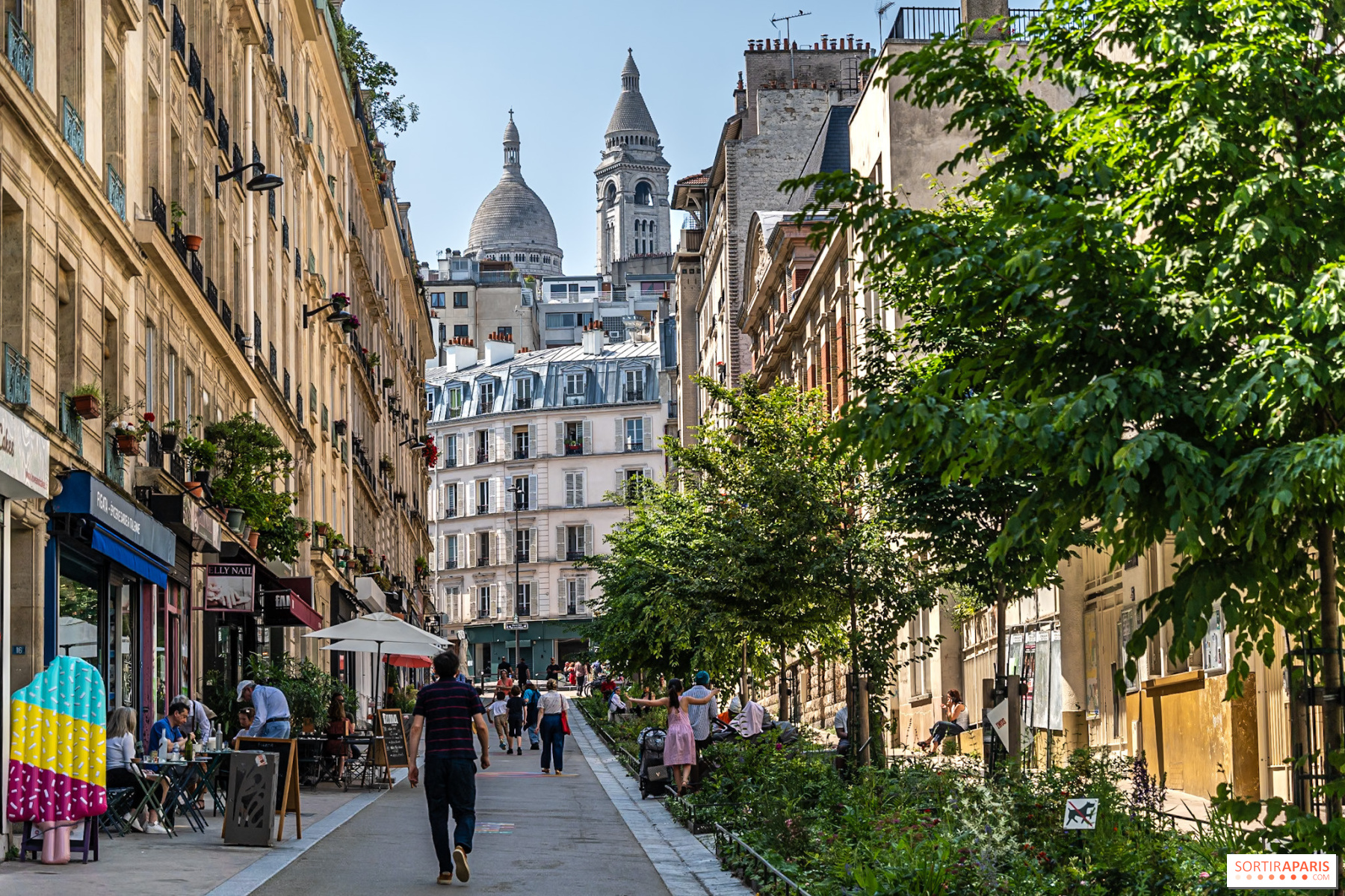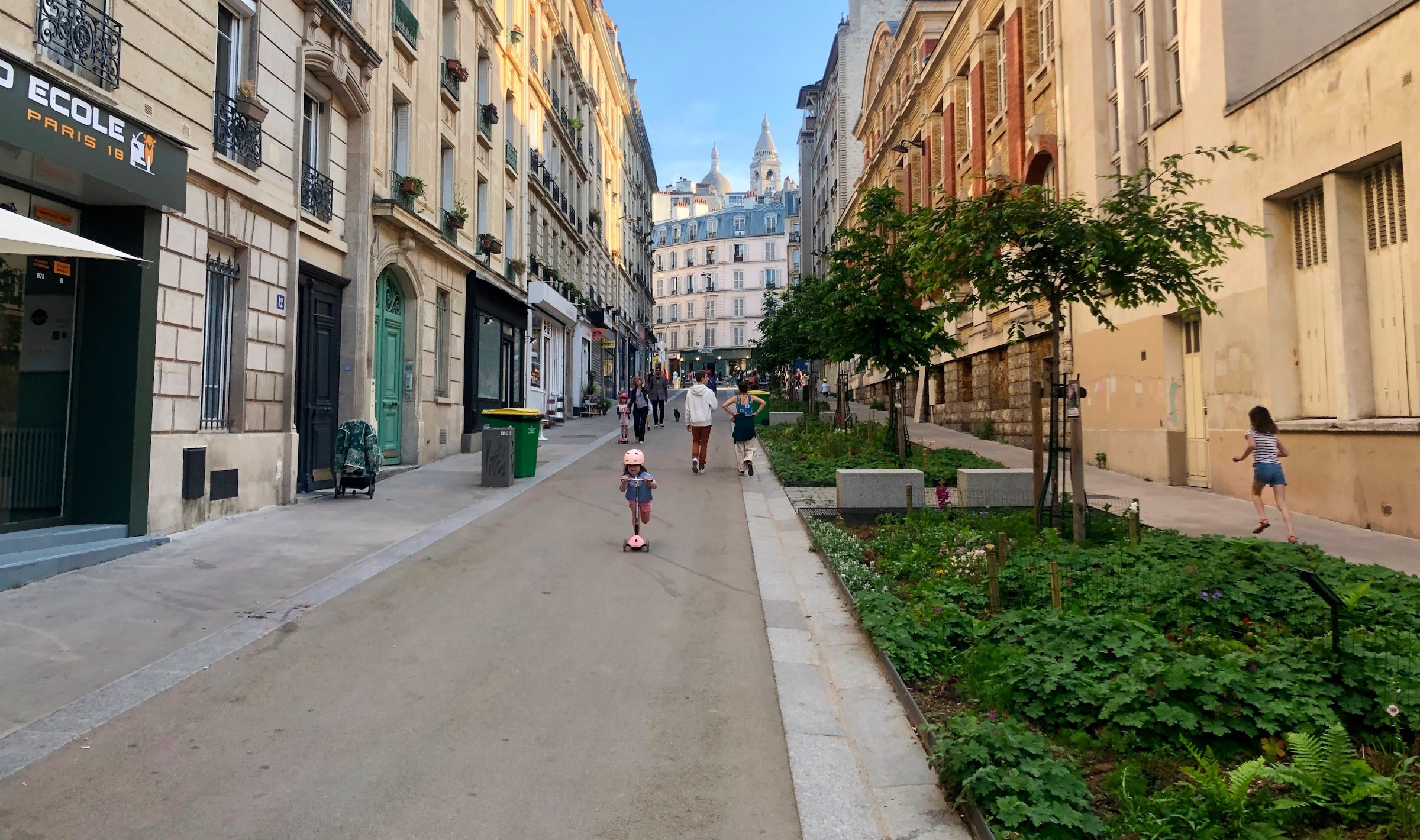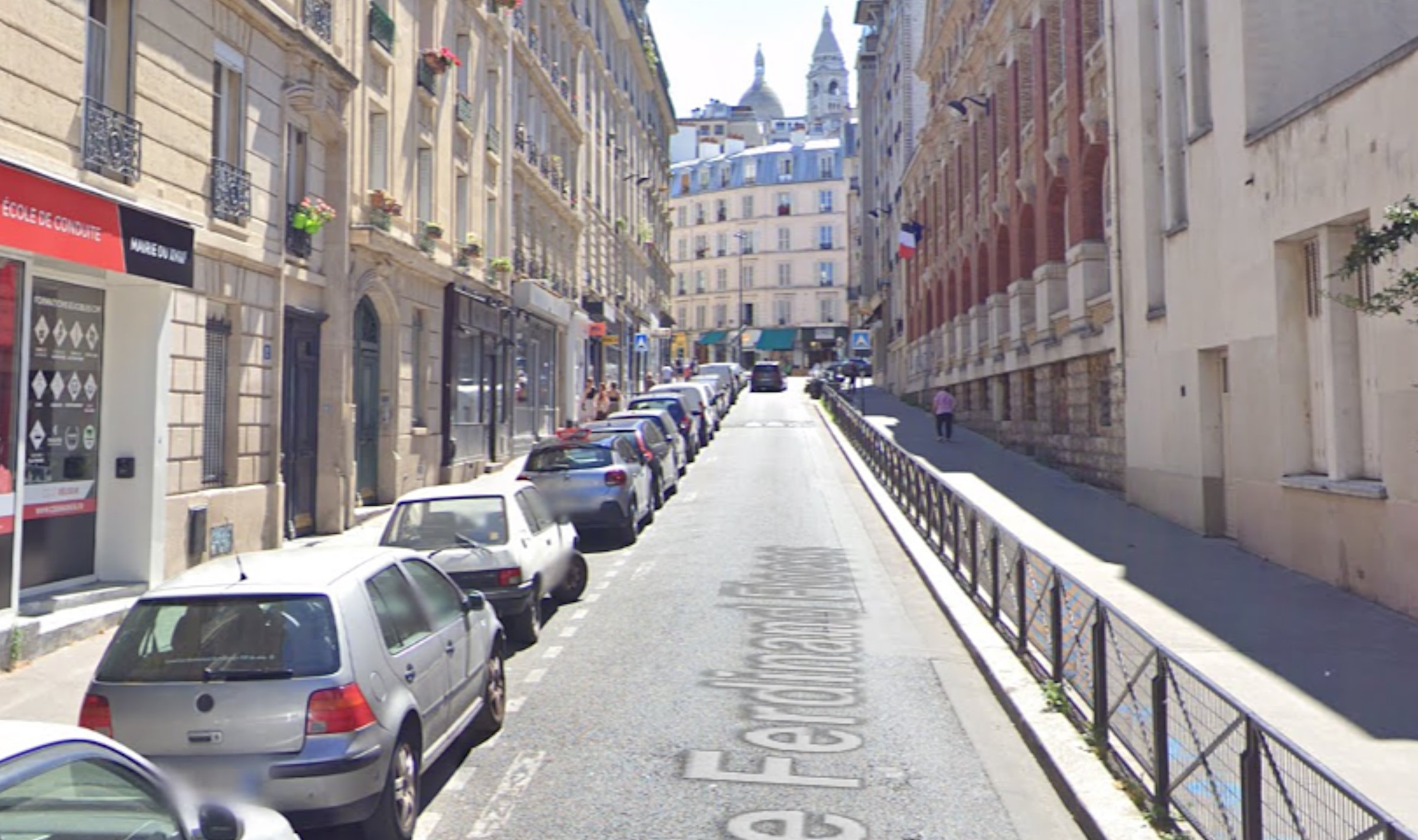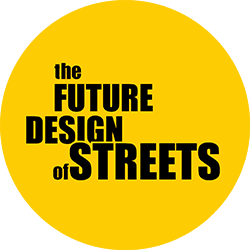Rue Ferdinand-Flocon, Paris France
Programme: Rue aux Écoles
School: Elementary School D’application Ferdinand Flocon and Nursery School Ferdinand Flocon
Architect and Management: Municipality of Paris
Date: 2021
Show on google maps
Keywords: Child-centered urban design; Co-creation with children; Pedagogical dimension; Community events; City as a living laboratory
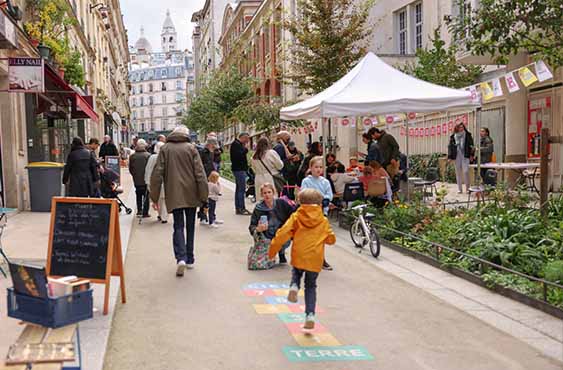
The City of Paris has played a pioneering role in reimagining how schools relate to their urban surroundings through the “Rues aux Écoles” programme—an ambitious citywide strategy to reclaim streets for children and communities. The transformation of Rue Ferdinand-Flocon, in the 18ᵉ arrondissement, exemplifies this initiative’s potential to merge urban design, education, and civic participation into a single, coherent vision for a more inclusive and child-friendly city.
As part of this programme, the street was permanently closed to motorised traffic, eliminating through-traffic and reclaiming the roadway for pedestrians, children, and local residents. What was once a narrow, vehicle-dominated corridor has been converted into a safe, vibrant, and multifunctional public space. The project’s design integrates colourful ground patterns, playful pavement drawings, planters, benches, and shaded zones that encourage movement, rest, and interaction.
A defining feature of the Rue Ferdinand-Flocon transformation is its participatory design process, in which children were actively involved from the outset. Pupils from the adjacent school took part in workshops where they discussed how they wanted their street to look and feel. They chose colours, contributed to the graphic designs painted on the ground, and helped imagine playful patterns that now animate the space. This collaborative process empowered them as active citizens, giving tangible form to the idea of the city as a shared learning environment and fostering a sense of ownership and belonging.
The pedagogical dimension of the project extends beyond participation. Teachers now use the street as an extension of the classroom, integrating outdoor activities, environmental learning, and creative workshops into everyday routines. This approach promotes experiential learning and connects education directly to urban life, turning the city into a living laboratory for knowledge, exploration, and social responsibility.
Equally important is the role of the local community and neighbourhood, which has embraced the transformed street as a social and cultural space. Rue Ferdinand-Flocon now regularly hosts street markets, festive events, and neighbourhood gatherings, reinforcing its identity as a shared civic space. This everyday appropriation of the street by children, parents, and residents transforms it into a public stage for community life, where the boundaries between school, neighbourhood, and city are blurred.
By opening the school to the city and reconfiguring the street as a place for learning, play, and civic exchange, the project strengthens the school’s role as a cultural and civic institution. It cultivates a sense of shared responsibility and participation among children and adults alike—helping to shape more conscious, active, and community-oriented young citizens.
Ultimately, the Rue Ferdinand-Flocon intervention illustrates how Paris’s Rues aux Écoles programme transcends traditional notions of traffic management or safety. It represents a new urban paradigm in which streets are understood as social, pedagogical, and ecological commons—spaces where children’s needs and voices are central to the design of the city itself.
